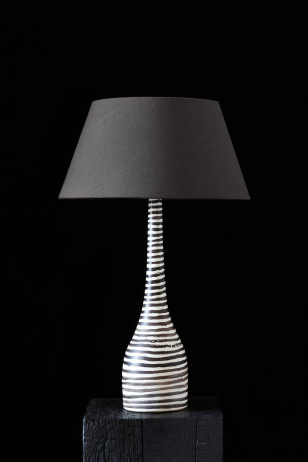Jouve Georges
Biography
Georges Jouve (1910-1964) was a key variable in the innovation, optimism, and synthesis of the arts following the war. Born in France to decorator parents, the arts were engraved in Jouve's conscious from the off, though his primitive years were more theoretical as he studied History of Art and Architecture at university before joining WWII as a soldier.
Following two years detained in a German camp, Jouve escaped to his family home in Dieulefit, a potters village in the South of France. Looking for a way to make money, Joueve learned to make clay from the local soil and began his exploration of ceramics. In 1944, Jouve took his practice to Paris where he perfected his satin-black finish glaze, 'black became (his) signature colour because it allowed him to express the sculptural aspects of his ceramic forms'. Despite his creation of exceedingly functional pieces such as lamps and tables, his works on the whole are objects for aesthetic contemplation and enjoyment. Following the war, Jouve was deeply embedded within the Parisian art scene exhibiting alongside the likes of Jean Prouvé and Charlotte Perriand, and trading with important dealers such as Steph Simon.


